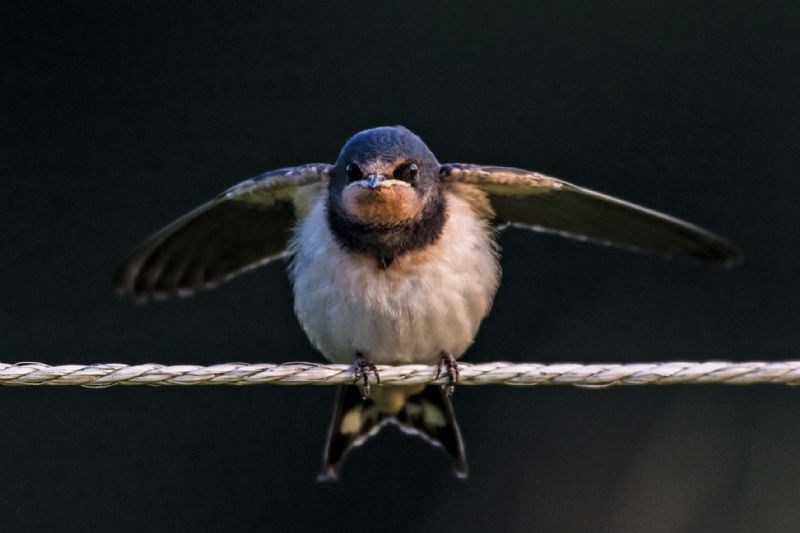- Home
- News, Articles & Reviews
We are hiring! Please click here to join our growing magazine delivery team in Gloucestershire!
Areas
Pets & Wildlife
Archive

Amazing migrations
All Areas > Pets & Wildlife > Wildlife Matters
Author: Dorothy Glen, Posted: Wednesday, 24th August 2022, 09:00
September marks the end of our record-breaking summer. Flowers fade, leaves start to brown, the sun is lower in the sky and golden through the trees. As children are welcomed back to school, our songbirds emerge fresh-feathered from their annual moult and are welcomed back to our gardens.
Some birds, though, are starting a longer journey as they fly south for the winter. Perhaps the best loved of these are swallows and house martins, which are a happy harbinger of the coming spring when they arrive earlier in the year.
Cuckoos fly via Italy to the Congo rainforests
In September, swallows begin the long flight back to South Africa. House martins travel to the sahara and beyond. Similarly, swifts, which spend their lives in flight, travel as far as Mozambique. Another impressive migration is undertaken by the cuckoo, which flies via Italy and Spain to the Congo rainforests.
As well as birds, many of our insects also migrate. Best-known are perhaps the painted lady and clouded yellow butterflies, which both have occasional mass migrations. For example, the golden ball of clouded yellows which were mistaken for poison gas over the Channel during the Second World War.
When conditions are right we can see an explosion of painted ladies on our shores, the last being in 2009 when 11 million of the butterflies arrived from Europe. That year there was a large citizen science study, where a combination of observers and radar allowed scientists to understand the extent of the insects’ migration for the first time.
Each butterfly only does one step of the journey
The species makes a 9,000-mile round trip from tropical Africa to the Arctic Circle, following the caterpillar food plants as growing conditions change with the seasons. They do this over up to six successive generations, so each butterfly only does one step of the journey, and those which return to Africa are several generations behind their ancestors that left in the spring.
Radar showed that the butterflies fly an average of 500m above ground in order to travel on the wind at 30mph.
We are likely to see more migrants
As the climate warms, we are likely to see more migrants, such as the impressive swallowtail butterfly, make a permanent home in the UK. Only this year we heard about the exotic-looking bee-eaters which successfully nested and reared chicks in Norfolk, one of only a handful of nesting attempts ever in the UK.
There have been attempts from swallows to overwinter in England in recent years too – perhaps it won’t be long until we see them all year round.Other Images
Copyright © 2025 The Local Answer Limited.
Unauthorized use and/or duplication of this material without express and written permission from this site's author and/or owner is strictly prohibited. Excerpts and links may be used, provided that full and clear credit is given to The Local Answer Limited and thelocalanswer.co.uk with appropriate and specific direction to the original content.More articles you may be interested in...


© 2025 The Local Answer Limited - Registered in England and Wales - Company No. 06929408
Unit H, Churchill Industrial Estate, Churchill Road, Leckhampton, Cheltenham, GL53 7EG - VAT Registration No. 975613000You are leaving the TLA website...
You are now leaving the TLA website and are going to a website that is not operated by us. The Local Answer are not responsible for the content or availability of linked sites, and cannot accept liability if the linked site has been compromised and contains unsuitable images or other content. If you wish to proceed, please click the "Continue" button below:




